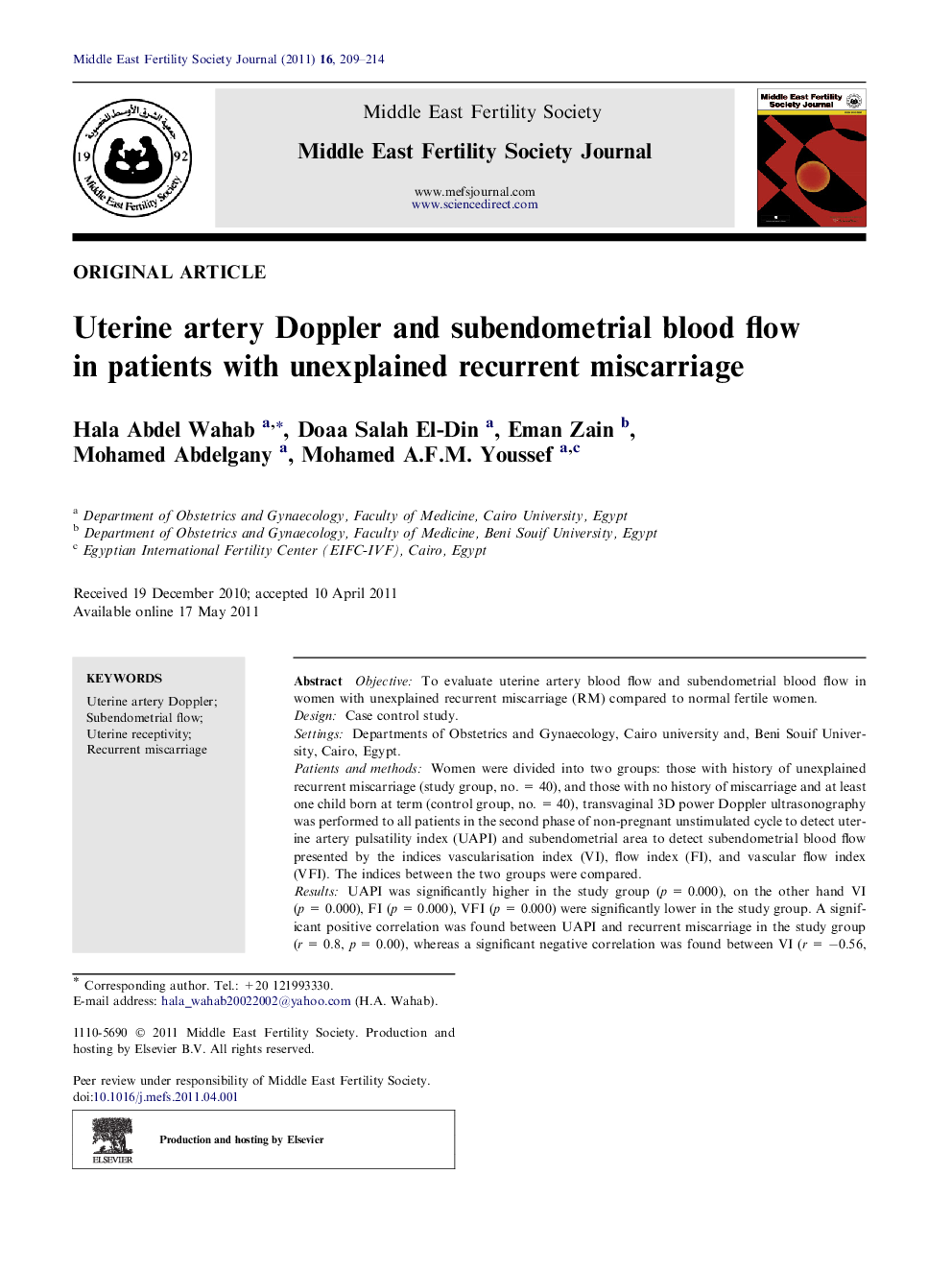| Article ID | Journal | Published Year | Pages | File Type |
|---|---|---|---|---|
| 3966340 | Middle East Fertility Society Journal | 2011 | 6 Pages |
ObjectiveTo evaluate uterine artery blood flow and subendometrial blood flow in women with unexplained recurrent miscarriage (RM) compared to normal fertile women.DesignCase control study.SettingsDepartments of Obstetrics and Gynaecology, Cairo university and, Beni Souif University, Cairo, Egypt.Patients and methodsWomen were divided into two groups: those with history of unexplained recurrent miscarriage (study group, no. = 40), and those with no history of miscarriage and at least one child born at term (control group, no. = 40), transvaginal 3D power Doppler ultrasonography was performed to all patients in the second phase of non-pregnant unstimulated cycle to detect uterine artery pulsatility index (UAPI) and subendometrial area to detect subendometrial blood flow presented by the indices vascularisation index (VI), flow index (FI), and vascular flow index (VFI). The indices between the two groups were compared.ResultsUAPI was significantly higher in the study group (p = 0.000), on the other hand VI (p = 0.000), FI (p = 0.000), VFI (p = 0.000) were significantly lower in the study group. A significant positive correlation was found between UAPI and recurrent miscarriage in the study group (r = 0.8, p = 0.00), whereas a significant negative correlation was found between VI (r = −0.56, p = 0.00), and FI (r = −0.79, p = 0.00) and recurrent miscarriage in the study group, but no significant correlation was found between endometrial thickness and endometrial volume between the two groups. However the application of binary logistic regression analysis model found that adding variables has not significantly increased the ability to predict the occurrence of miscarriage.ConclusionThe presence of good uterine and endometrial blood flow is an important prerequisite for successful implantation and continuation of pregnancy as shown by higher uterine artery blood flow resistance and lower endometrial blood flow in recurrent miscarriage cases and those patients with unexplained RPL may have abnormalities in the uterine and endometrial blood flow. Despite these findings we could not find any cut off values that could predict the occurrence of miscarriage which may be attributed to small sample size and short period of follow up so larger prospective studies are needed aiming to confirm such results and reaching values that can accurately predict the occurrence of miscarriage.
